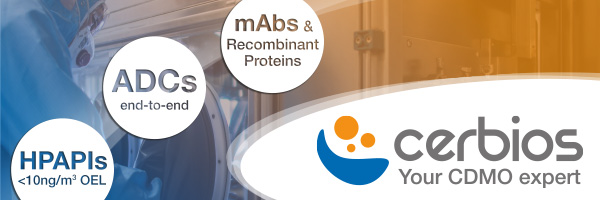Contract Services
Innovation in pharma 25th February 2019
By Sarah Harding, PhD
We talk to Nick Shackley, Global Vice President Innovator Products and Solutions at Johnson Matthey, about current innovatio

We talk to Nick Shackley, Global Vice President Innovator Products and Solutions at Johnson Matthey, about current innovations in the pharmaceutical sector.
The pharmaceutical industry is one of the most fast-moving and innovative fields of research and development (R&D). The US FDA approved 59 new molecular entities (NMEs) last year. Meanwhile, the European Medicines Agency (EMA) recommended 84 medicines for marketing authorization, 42 of which had a new active substance. These new products, along with advances that drive additional value into mature ones, represent a high-investment field. Therefore, while mimicry might be the sincerest form of flattery, new innovations need to be protected, through diverse domestic and international laws and regulations.
Sarah Harding (SH) spoke to Nick Shackley (NS), Global Vice President Innovator Products and Solutions at Johnson Matthey (JM), about innovations in the pharmaceutical sector, the challenges of intellectual property (IP), and the importance of working with the right partners in order to reach the market as quickly as possible.
SH: A couple of years ago there were concerns about a lack of innovation in the pharma industry. Now, the tide appears to be turning – is this the case and, if so, why?
NS: The focus on more niche therapeutics applications – notably oncologic – is generating a greater number of late phase candidates which have secured approval, including those for unmet needs. This trend will probably continue, although the exact number of annual approvals will still vary.
SH: How does JM go about identifying fresh ideas and nurturing breakthrough technologies?
NS: We invest around 5% of our revenue in R&D to ensure our science stays cutting edge. Our science and technology are world class and we have more than 1,500 people working in R&D globally. We also look for collaborations via our academic networks, government and regulatory authorities, or the hungriest new start-ups. We can never have a monopoly on ideas. Some of the best ideas will come from outside our business.
To bring the best ideas to market, we have a strategic framework to capture, prioritize and drive ideas forward. We translate these efforts to develop new or better ways of solving our customers’ problems and build deep collaborative relationships. We also look at unsolved challenges in the market and align our ideas to create dedicated work streams and day-to-day business delivery.
SH: Can you give us some examples?
NS: Some examples of where we provide innovation in the pharma market include:
- Particle Engineering: We leverage our expertise and experience in particle engineering to solve the complex problems in bioavailability experienced by our customers. This enables us to help design drugs that have the right physical characteristics appropriate for the API.
- Process scale-up: We help companies scale up their processes rapidly, allowing them to accelerate the development of their innovative new pipeline drugs and reach the market faster.
- Manufacturing development: Through investing and delivering on the development and scale-up of new manufacturing processes, like continuous manufacturing, JM provides clients with unique ways to manufacture their innovations.
SH: What is JM’s ‘Innovation Factory’?
NS: Essentially, it’s the interface between JM and the broader world of innovation. The world is changing faster than ever, and our Innovation Factory’s role is to act as a facilitator and a conduit between the external world and JM, to discover and evaluate new ideas that could bring meaningful new revenue streams to our customers.
Whilst JM must continue to grow and iterate our core businesses and continue to serve our existing customer base, we need to seek new technologies and new ways of working. Our Innovation Factory gives us a team specifically dedicated to looking for these outlier ideas.
SH: What are the key considerations when considering IP for a new pharma product?
NS: There are many vital considerations. One is defining the polymorph and solid state of the API, which affects bioavailability. The process for manufacture is another, and this will also affect the speed of reaching the market. JM’s ability to develop batch and continuous manufacturing processes provides our customers with different ways to improve their drugs with differentiating process IP in a competitive pharma market.
SH: Are any of these considerations unique to the pharma market?
NS: Most certainly. Solid state has important implications for current and future IP protection, but also for how the product is dosed or delivered. It’s important, for example, to think ahead to what will go on the product label, to make sure the patent is fit for the product’s ultimate purpose.
SH: Do you have any other advice for companies innovating in the pharma space?
NS: Innovation must be focused on addressing the three key variables for successful commercialization of a new entity – how to improve the speed of development, balance the associated cost and appropriately manage the risk.
Our future growth will come from using our science and knowledge to help solve real problems and create value for our customers. For us, this is what innovation is all about.



